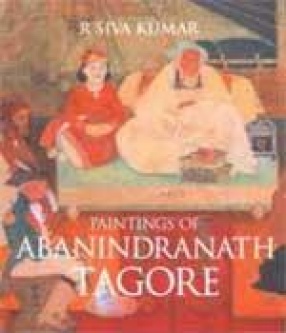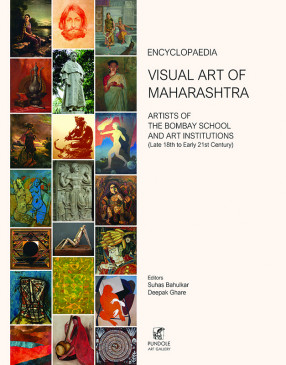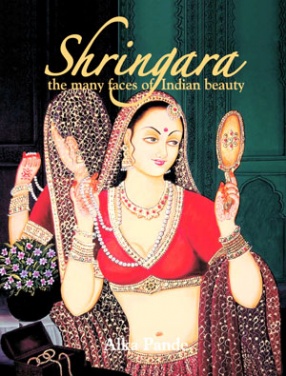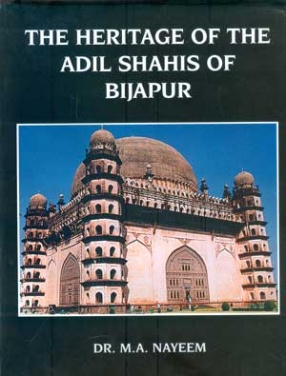Old Delhi-New York: Personal Views
Synopsis
These watercolours by Cyrus Jhabvala, as well as the pencil drawings which preceded them in his previous book, Delhi - Stones and Streets, grew out of his pleasure in documenting the ruins of the successive Delhi before they were entirely swallowed up in the vast metropolis that is modern New Delhi. This latest capital of India is spreading around, rolling over, and finally burying every last trace of all the older capitals, including the most recent ones of the Mughal and British dynasties. No other city except Rome provides so much ancient architectural evidence of what came before. As in Rome, professional and amateur artists, with sketchpads, notebooks, pencils, and folding stools, have prowled through the lost cities of Delhi. Some have been attracted by the romantic associations provided by trumbled and windswept ruins in the sand; others have mused on the magnificence and power that has been, and on great names now forgotten. But very little of such sentiment formed Jhabvala's motives when he went out to sketch. His expeditions produced a record of the fast disappearing monuments constructed 600 years earlier as wave after wave of Muslim invaders poured into Delhi from Central Asia. Jhabvala's record is highly personal and subjective and, at the same time, very precise - as precise as the 19 century photographs taken of the same area before and after the Indian Mutiny of 1857. However, those early photographs of the abandoned plains south of what was once called Shahjehanabad, where the Red Fort stands and the Mughal Emperors lived, were largely panoramic; you don't get many close-up details from the hundreds of tombs, mosques and summer retreats that once so picturesquely dotted the landscape. It was within this wilderness of ruins left behind and long since obliterated or built over that Jhabvala searched to find those missing close-ups. A practicing architect for most of his life, he gives us something new in his views collected in this book. When he drew a half collapsed heap of stones that had once been an impressive tomb or minaret, he knew where each fallen stone had formerly been fitted against all the others, or how the builders had followed age-old principles of construction appropriate for the area as well as utilising the available material and the available workmen. As an architect he knew too that to draw a building is to get to know it better, so his sketching expeditions were also ones of discovery. He brings that same professional eye to New York's Upper East Side. But his hand now mostly describes the encroachment of the city's multiplying business and residential towers pushing along Lexington and Third Avenues towards his own smaller scaled neighbourhood on the east river, trucked in between Beekman and Sutton Place. The brick-faced tenement buildings on Second and First Avenues, which were beginning to go up as Delhi was first being photographed, are now coming down with an astonishing overnight rapidity; the fresh gaps in the battered old facades are quickly plastered over with posters for rock concerts and spiritual healers stuck on to rough board fences. Above them, in the distance, a hard and unrelenting Manhattan skyline blinds the eye as the sun hits thousands of new windows. Thrusting forward towards their target of the East River, the new buildings, with their eye-catching materials and shapes, visually overwhelm the various small businesses clustered below them, which give the side streets and wider avenues their life and colour. The brash high-rise towers seem ready to obliterate the streets themselves and all identifying marks of a traditional New York neighbourhood. In direct contrast to such a bleak and depopulated trump's New York, these drawings and water colours show a Delhi where it is the hectic life of the street that threatens to take over the buildings and visually efface them. In another way, Jhabvala's paintings spring from his professional beginnings as an architect. His is still the eye of the architecture student a lifetime ago who was expected regularly to produce 'renderings' of imagined or real buildings, usually in watercolour. These had to be of a professional quality in order to illustrate to future clients what they would be getting for their money. In most cases these renderings would be augmented by scale models, and those too had to possess a high quality. And every image in this book shows the critical eye of the professor of architecture and ultimately head of the school of architecture of Delhi University - a man with a very precise knowledge of historic Indian building styles and how those styles evolved. Behind all this rather formidable persona - or maybe right up front -- is the sly wit of a long-time urban dweller: and we find in these paintings his amusement at the incongruous - incongruousness of scale, of styles, decoration, and purpose, whether in New York or New Delhi. There is a tradition of Indian Miniature Painting that Jhabvala has tapped: it is one of meticulous detail. Some of these paintings remind me of the Mewar School at the end of the 18 century and the beginning of the 19. Mewar was an ancient kingdom in Rajasthan with its capital in Udaipur. There was a fashion in that court for large-scale panoramic views of palaces and gardens, ramparts and waterways, correct in every detail down to the particular leaves on the trees and the species of bird amidst those leaves. Every tiny decorative flourish of these Mewar palaces can be seen in these miniatures, including the cords on the window blinds, the tassels on the Rana's bolsters, the porcelain blue and white wine flask standing in a niche, and the tie and dye cummerbands on the boatmen rowing the royal barque on lake Pichola. You see everything, no matter how minute. Now study Jhabvala's view of the corner of Second Avenue and East 52 Street in New York, p 91, the best illustration of a cluster of not very distant skyscrapers thrusting forward to seemingly wipe out whatever gets in their way. At the very centre of this picture, at the bottom, some turn buckled wires can be seen holding up a scrawny, bare tree; little rolls of pink plastic cushion the taut wires to protect the tree's bark. Directly opposite, on 52 street and through a plate glass window, we spot some red and white striped lampshades hanging over the tables in Mimi's Piano Bar (Advertised above, the wall of the building), while across Second Avenue from Mimi's we can read the sign for a restaurant now closed, called Rocky Lee Chu Cho Bianco. Returning to our scrawny tree and its armature, to its left is an advertisement for an experimental off Broadway musical Tamara, with a Jhabvala version of a Tamara de Lempicka heavy-lidded female face. This masterful watercolour is a tribute perhaps to traditional Indian painting, but if his New York and Delhi scenes resemble, via their bird's eye views, the busy worlds shown in Mewar miniatures, there is never a self-conscious attempt to recreate such a style of painting. The resemblance lies in his humorous use of small, telling details, in the vivid bursts of surprising colours, and in the often-unexpected spatial relationships - a combination that remains very, very pleasing to us. You must first look at all the clouds in these pictures -- and then a final word on Professor Jhabvala's palette. It seems to me that today's chemically manufactured synthetic paints are more suitable for portraying modern city atmospheres than the open countryside. Paint needs so longer to be ground by hand like spices in a mortar and pestle, which the miniature painters working in Rajasthan knew so well how to do. A huge new range of colours has been added to all the old natural ones to produce the bright, unnatural - or unearthly - palette of the modern cityscape: a pictorial comment perhaps on the colorfully toxic air we breathe in New Delhi and New York.
Read more
80.10
72.09
$
89.00 $
Free delivery Wolrdwidе in 10-18 days
Ships in 1-2 days from New Delhi
Membership for 1 Year $35.00
Get it now and save 10%
Get it now and save 10%
BECOME A MEMBER
Books by the same author








Bibliographic information